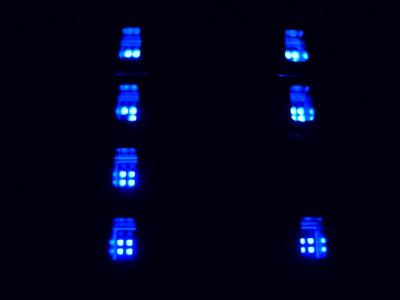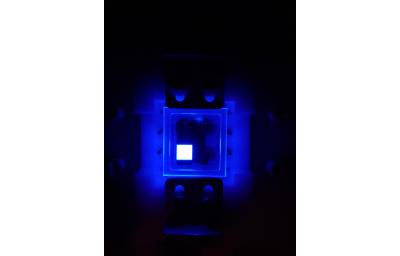Researchers from the Universities of St Andrews, Kyoto and Kyushu have coincidentally developed state-of-the-art multi-resonant TADF (MR-TADF) OLED emitters, based on a helical boron-nitrogen-oxygen doped nanographene design.
In these multiple studies, the researchers have shown that it is possible to obtain deep blue, narrowband emission, very fast reverse intersystem crossing rates constants, and high-efficiency vacuum-deposited OLEDs.
In the first study, the Prof. Takuji Hatakeyama research groups at the Kyoto University developed two π-extended model compounds by combining two distinct MR-TADF units: DOBNA and DABNA, and assessed their properties through theoretical calculations. One of these models demonstrated both a high S 1 energy and a small singlet-triplet energy gap, ΔE ST , making it ideal as a deep-blue MR-TADF emitter. Leveraging this finding, they synthesized the emitter DOB2-DABNA-A. The OLED displayed CIE coordinates of (0.145, 0.049) and showed an EQE max of 21.6% at 1000 nits , meeting the BT.2020 requirement and demonstrating practical luminance performance.
In the second study, the groups of Prof. Eli Zysman-Colman at the University of St Andrews and Profs. Chihaya Adachi and Youichi Tsuchiya at Kyushu University have computationally designed and synthesized a new deep blue MR-TADF emitter, f-DOABNA, that showed remarkably improved photophysics compared to the vast majority of MR-TADF emitters, and comparable performance to DOB2-DABNA-A. Due in part to its helical framework, f-DOABNA is not only deep blue-emissive and has a very narrow full-width at half maximum for its photoluminescence spectrum but its excited-state lifetime is very short, this owing to very fast reverse intersystem crossing , on the order of 10 6 s-1 . OLEDs with f-DOABNA achieved the BT.2020 color point for blue, with a CIE y value of 0.04 and showed EQE max of around 20%.
This work demonstrates that it is possible to produce a high-performance pure blue MR-TADF OLED without the need for an assistant dopant by careful engineering of the MR-TADF emitter.
MR-TADF compounds have emerged as attractive candidates to be incorporated into commercial OLED dipslays, as these are organic, highly efficient (100% IQE), brightly luminescent compounds with narrowband emission, and so, can produce the desired saturated emission required by the display application.



